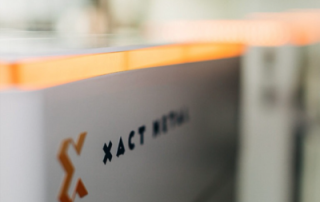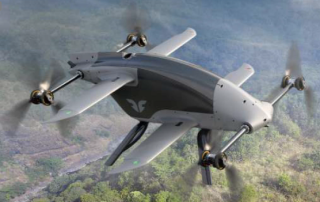Discover the Benefits of HP’s New PA12 S and PA12 FR Materials
In the ever-evolving world of 3D printing, HP continues to lead the charge with innovative materials that enhance the capabilities of additive manufacturing. Two of their latest offerings, PA12 S and PA12 FR, are set to revolutionize the industry. Let’s explore the benefits these materials bring to customers. PA12 S: Superior Surface Aesthetics and Cost Efficiency HP’s PA12 S, developed in collaboration with Arkema, is designed to deliver exceptional surface aesthetics and cost efficiency. This material is specifically tailored for HP’s Jet Fusion 5200 Series 3D printing solutions, and it will soon be available for the Jet Fusion 5600 Series. Key Benefits: Enhanced Surface Finish: PA12 S sets a new benchmark for surface aesthetics, making it ideal for producing high-quality, visually appealing parts. Cost Reduction: By optimizing the production process and streamlining post-processing steps, PA12 S significantly reduces variable costs per part and lowers the total cost of ownership. High Reusability: With an industry-leading reusability ratio of up to 85%, PA12 S minimizes waste and contributes to more sustainable manufacturing. PA12 FR: Flame Retardant and High Performance PA12 FR is another groundbreaking material from HP, designed to meet the stringent requirements of industries such as consumer electronics and automotive. This flame-retardant material offers [...]
Selecting an Appropriate 3D Scanner for Inspection
Selecting an appropriate 3D scanner for my inspection requirements Selecting a scanner for non-contact inspection is a very similar process to selecting a new CNC machine or a new 3D Printer. When shopping for a new CNC machine, users likely consider - Machine travel limits Controller/Programming capabilities Number of axes supported - Multi-axis capabilities (reducing setups) Feed and speed capabilities Horsepower Similarly, when selecting a new 3D Printer, users likely consider - End use parts vs conceptual design Materials Part sizes Printer Maintenance requirements Accessibility of materials While other parameters must also be considered when selecting a 3D scanner such as part sizes, there are two main parameters a user must consider. Accuracy Resolution (AKA – ‘Point Spacing’) Accuracy Any metrology-grade scanner must come with a “published accuracy” to provide users with confidence that their calibrated scanner will measure, at least, to the accuracy specs provided. Accuracy is the easier of the parameters to understand. If you consider any scanner as throwing a bunch of points onto your part, the scanner’s accuracy is the +/- distance of those points to the actual surfaces they contact. As a general rule of thumb, the accuracy of the scanner needs to be ‘better’ than your [...]
Cimquest Awarded Top Worldwide Xact Metal Sales Leader 4 Years in a Row
We are so proud to share that, for the fourth year in a row, Cimquest has been #1 in sales Worldwide for Xact Metal! We are thrilled with this accomplishment but of course this is really a testament to a fantastic partnership and an incredible customer base who has been able to adopt and thrive with this unique Metal 3d Printer. What to Know about Xact Metal: Top-Quality Products: Xact Metal 3d printers deliver on a value that no other machine in the industry does. They have stayed focused for years on a simple but scalable system that delivers strong core capability and service. Thye listen to customers and their sales partners and invest in long term value. Independent and Made in USA: The machines are produced in State College PA on the campus of Penn State University. The company is also independently owned and operated so decisions are made based on what is the right thing to do and what is best long term for customers. On top of that Xact Metal is an incredibly flexible, capable and overall easy to work with company. This makes doing business with them a breath of fresh air. Expert Support: Being the most prolific Xact [...]
Revolutionizing Drone Innovation with HP Multi Jet Fusion Technology
Revolutionizing Drone Innovation with HP Multi Jet Fusion Technology At Cimquest, Inc., we’re proud to help businesses unlock the potential of cutting-edge technologies like HP Multi Jet Fusion (MJF) to drive innovation in industries such as UAV manufacturing. The Challenge: Drone manufacturers often face significant hurdles in balancing weight, strength, and design flexibility. For example, traditional manufacturing techniques like carbon fiber layup are time-consuming and limit design adaptability. Meanwhile, parts created using other 3D printing technologies can suffer from brittleness, excess weight, or visible layering, failing to meet the high standards required for UAV performance and aesthetics. The Solution: By integrating HP’s Multi Jet Fusion (MJF) technology into their manufacturing process, industry leaders have overcome these challenges with ease. MJF’s superior material properties, advanced surface finishes, and precision have enabled drone manufacturers to revolutionize UAV design. With up to 48 MJF-printed parts per UAV, including exterior panels, landing gear, and battery casings featuring lightweight lattice structures, innovation is soaring to new heights. Key benefits of HP MJF technology for drone production include: ✅ Weight Reduction: Achieve up to 25% lighter fuselages, improving UAV flight performance. ✅ Efficiency Gains: Accelerate design cycles, reducing modeling time from weeks to hours. ✅ Exceptional Quality: Produce parts [...]
Unlocking the Future with Additive Manufacturing
Unlocking the Future with Additive Manufacturing: Download Our Comprehensive White Paper In the ever-evolving world of technology, additive manufacturing, or 3D printing, is at the forefront of innovation. Our latest white paper provides an in-depth exploration of how this groundbreaking technology is transforming industries, enhancing productivity, and enabling unprecedented customization. Here’s a brief summary of what you’ll discover: Chapter I: Understanding the Impact of Additive Manufacturing The State of Additive Manufacturing Today: An overview of the latest advancements and trends. A Glimpse at the Verticals in Focus: Insights into how 3D printing is revolutionizing manufacturing, packaging & automation, and transportation. Chapter II: How 3D Printing is Enabling Faster Design, Higher Productivity, and More Customization in Manufacturing Benefits of 3D Printing: Discover the advantages such as faster lead times, agile production, and design freedom. Practical Applications: Learn how 3D printing is used in rapid prototyping, tooling & fixtures, spare parts, and final products. Future Innovations: Explore the next frontier of manufacturing with 3D printing. Chapter III: 3D Printing Drives Innovation in the Packaging Industry Design and Prototyping: How 3D printing enhances design processes. Manufacturing and Supply Chain Efficiency: Real-world case studies from industry leaders like Trivium, [...]
What’s New in Geomagic Control X 2025
The latest release, Geomagic Control X 2025.0.0, offers much to be excited about. Below you’ll find our pick of the highlights, but remember to check the release note for a full list of updates. Innovative Implant Design: From Imaging to Surgical Application Hip replacement is common for osteoarthritis, using off-the-shelf acetabulum cups. However, some patients need bespoke implants due to complex conditions like previous surgeries or extensive hip damage. Complex hip replacements pose surgical challenges due to scar tissue, distorted anatomy, fragile or dead bone, and tumors. Bespoke implants require unique bone preparation and precise fitting, often through small incisions and avoiding nerves and blood vessels. Accurate design and manufacturing of implants are critical, involving multiple steps from patient scans to surgery. Starting with accurate imaging The patient-specific hip implant must start with CT or MRI imaging to analyze bone quality and morphology, helping the team establish implant positioning. These images may be augmented with standing x-rays for a 3D understanding of pelvic orientation. The next step must convert 2D medical images into a 3D model using Simpleware. This software imports image data and uses manual and AI-driven segmentation to define anatomical structures, generating a 3D model for accurate measurements. The 3D model [...]





